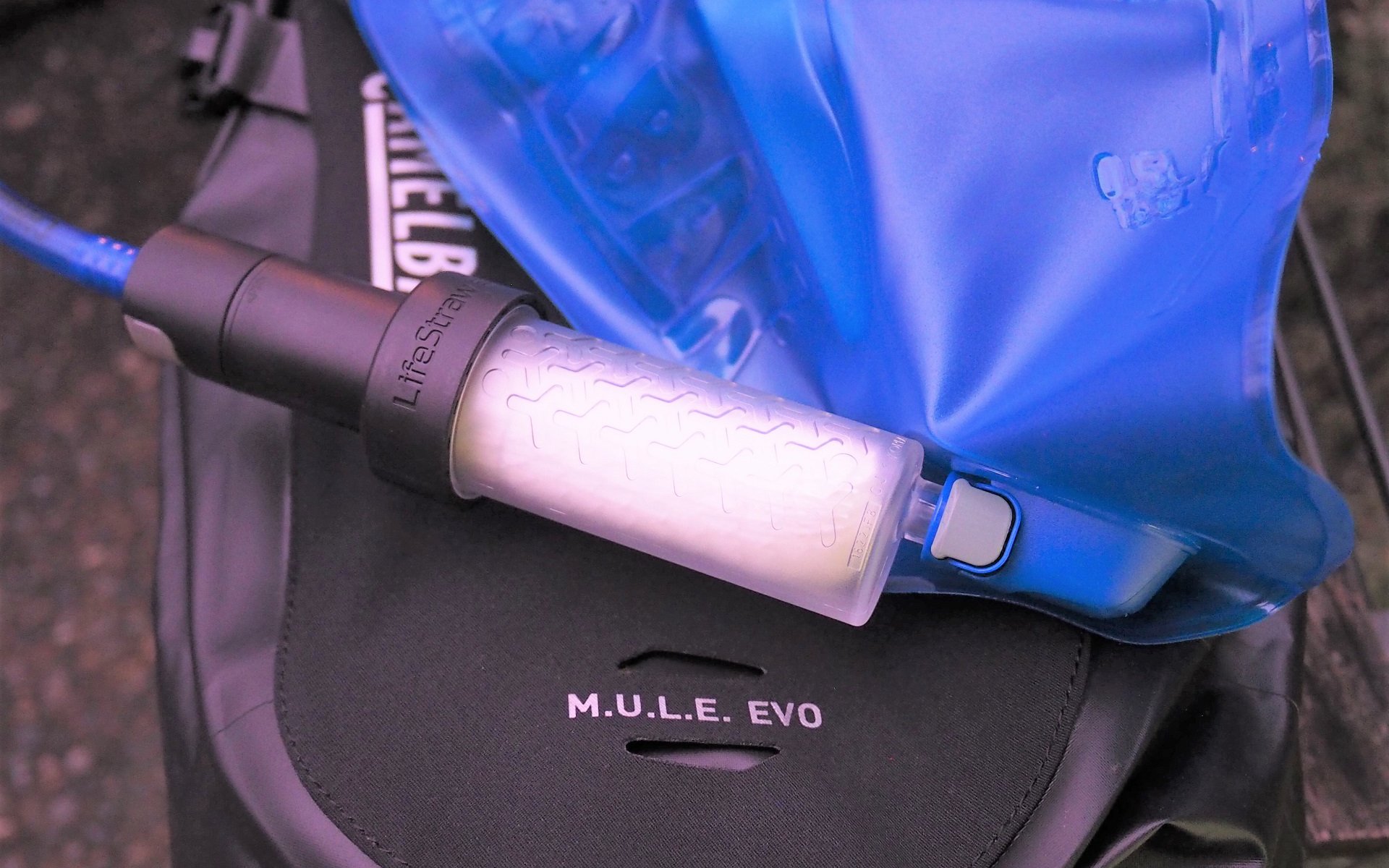
EDITORIAL
Fishing Reels & Four-Bar Linkages
Fishing Reels & Four-Bar Linkages
I was riding Hayes hydraulic disc brakes in 1999. My first 29er was a Titus Racer-X some 14 or 15 years ago. My first of many failed attempts at a 1x drivetrain for trail riding was on my Kona Roast in 2001. I warrantied or recycled so many shitty dropper posts that I ended up being both a very early adopter and a very late adopter of the product now known as 'the game changer.' I owned two Hammerschmidts, and loved them both. If I didn't have the first production Kona Honzo anywhere it's only because TBC took their time delivering it. I've been all in on alt-bars since 2017 and switched back to push-on grips the same year. I see the applications for suspension handlebars and noise-cancelling grips. I fell hard for Plus tires, both 27+ and 29+, and continue to preach that they're awesome for us average riders.
What's my point? I think I'm justified to get a little salty when folks suggest that I'm some kind of crotchety asshole going full Don Quixote against the progression of the mountain bicycle because I think things like internal cable routing, press-fit bottom brackets and Super Boost-157 hubs are solutions for problems that don't exist. In fact, I'll early adopt the shit out of any actual leap in bicycle fit or performance. I like long chainstays on my full suspension bikes and don't worry, soon you will too.
I was getting a little bit steamed up thinking about this the other day. I was drinking creek water out of my hydration pack, unconcerned about beaver fever, thinking that maybe CamelBak has just made bladders relevant again for a whole pile of riders - particularly for long rides with abundant water sources nearby - and there being some ingenuity to it. Don't look within mountain biking for the next innovation. It's not slightly wider hubs or tapered steerer tubes with bigger tapering. It's not a different brake caliper mounting standard*. All of the goods ones are adapted from somewhere else. I put together a short list of ones that come immediately to my mind. Please, let me know what I missed.
*Die Flat Mount! Die!
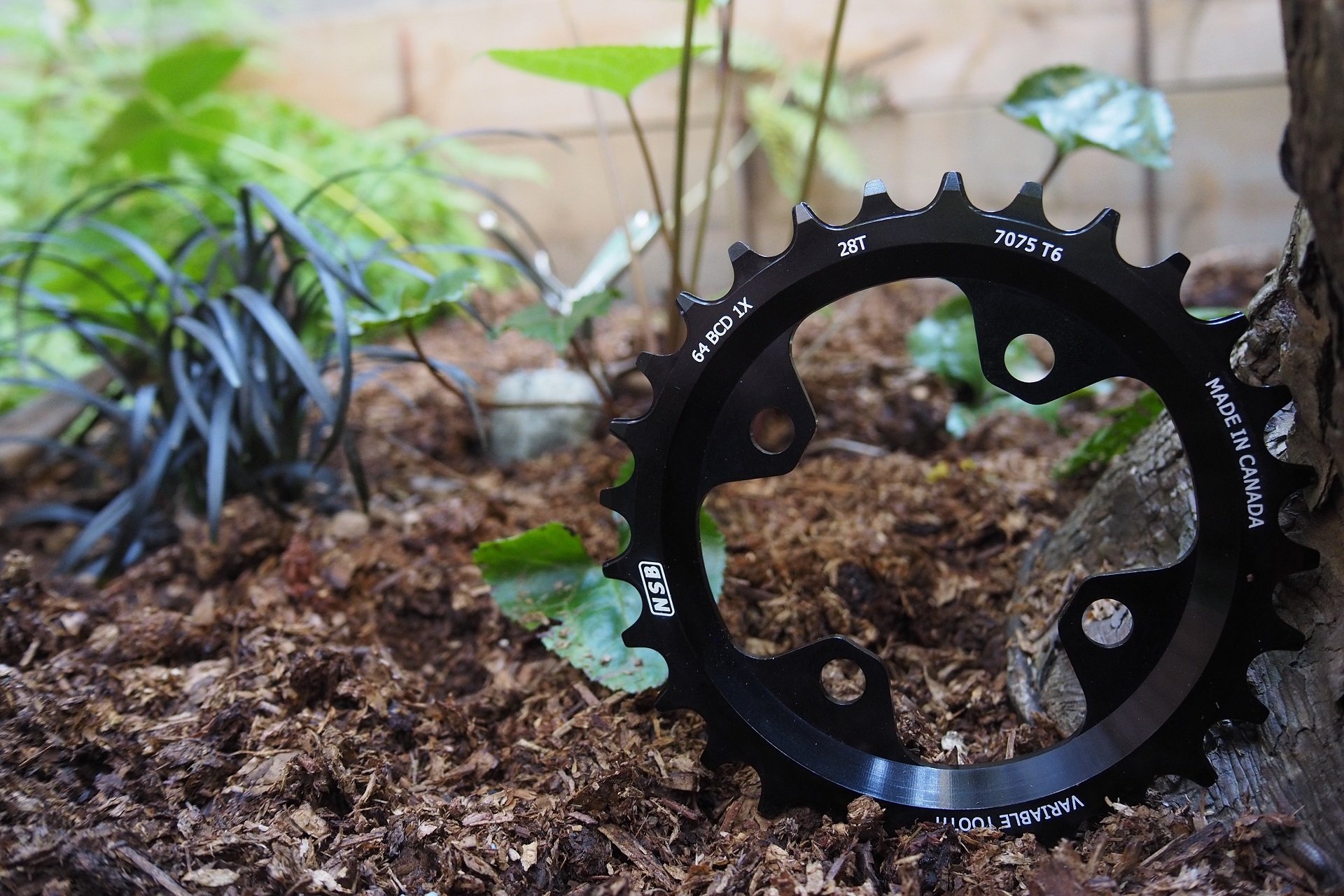
The idea of a narrow-wide, or variable tooth, gear is old. SRAM using it for 1x bicycle drivetrains, versus the added drag, cost, and complexity of a chain guide, was brilliant.
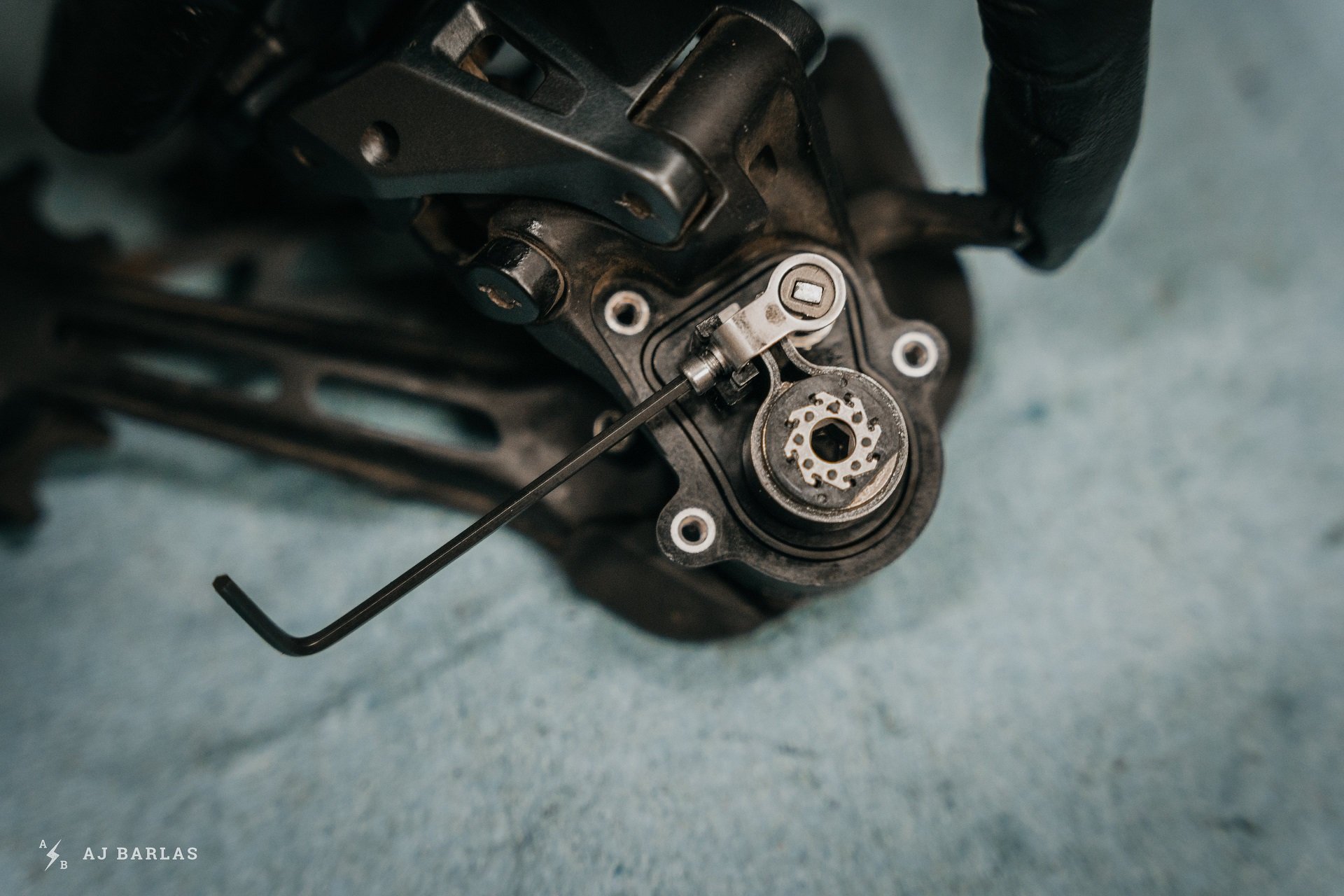
Shimano's introduction of a friction clutch to their rear derailleurs changed rider expectations for drivetrain noise and chain retention overnight. I assume the idea came from adjustable drag on fishing reels. Photo: AJ

The first prototype Horst Link bike was born in 1985 and continues to be one of the most relevant suspension designs now. The four-bar design closely resembles independent car suspension, originated in 1922. Photo: AJ
My favourite example is Narrow Wide chainrings, though my giddiness at their introduction in 2012 is also a sad tale of ignorance. Having played around with 1x setups for years, using various chain guides from an eNVy Double-E, to Paul's Chain Keeper, to a full-on MRP, the advent of SRAM's X-Sync held an epic amount of promise from what amounts to an aluminum throwing star. Imagine my surprise when I learned, talking to Pete from North Shore Billet, that variable-tooth gearing has been around almost as long as chains themselves. It wasn't that the savvy-Schweinfurters at SRAM had invented the idea of interfacing the teeth of their chainrings with the various width of the chain plates, they had brilliantly adapted a technology that's been around forever, and turned it into a real innovation.
Or could that be a 'reel' innovation, because the more I thought about it, the more I realized most awesome jumps in bicycle tech have come from elsewhere. For example, Shimano's clutch derailleurs forever changed rider expectations in terms of noise and drivetrains staying in gear. But really what is a friction clutch beyond an adaptation of the drag system on one of their fishing reels? Instead of adjusting tension to let out fishing line with a certain amount of force, the clutch derailleur allows the cage to move - or 'break free' - but the basic concept is the same.
What about the FSR suspension system, née Horst Link, that so many brands used, then didn't use, and are now using again since Specialized's patent has expired. Heck, even Chromag is using it apparently (with aluminum chainstays I'm guessing). And rightly so. I've heard more than one solid argument over the years that if a patent had never been granted to adapt a four-bar linkage to a bicycle that there would only be two suspension systems on the market. One, the Horst Link which at one time was used by Intense, GT, Turner, and many others and now also features on bikes from Rocky Mountain and Transition, and many others. And, two, the simple single pivot. Think the pre-e~bike Santa Cruz Heckler or Bullet, legendary Cannondale Prophet, or current poster-child Starling.
Someone could also write a book on all the tread patterns and suspension technology borrowed from moto. I mean, even today a quick browse of the MX-Tech website will clearly show that mountain bike companies don't just R&D* from each other.
*Rip-off & Duplicate
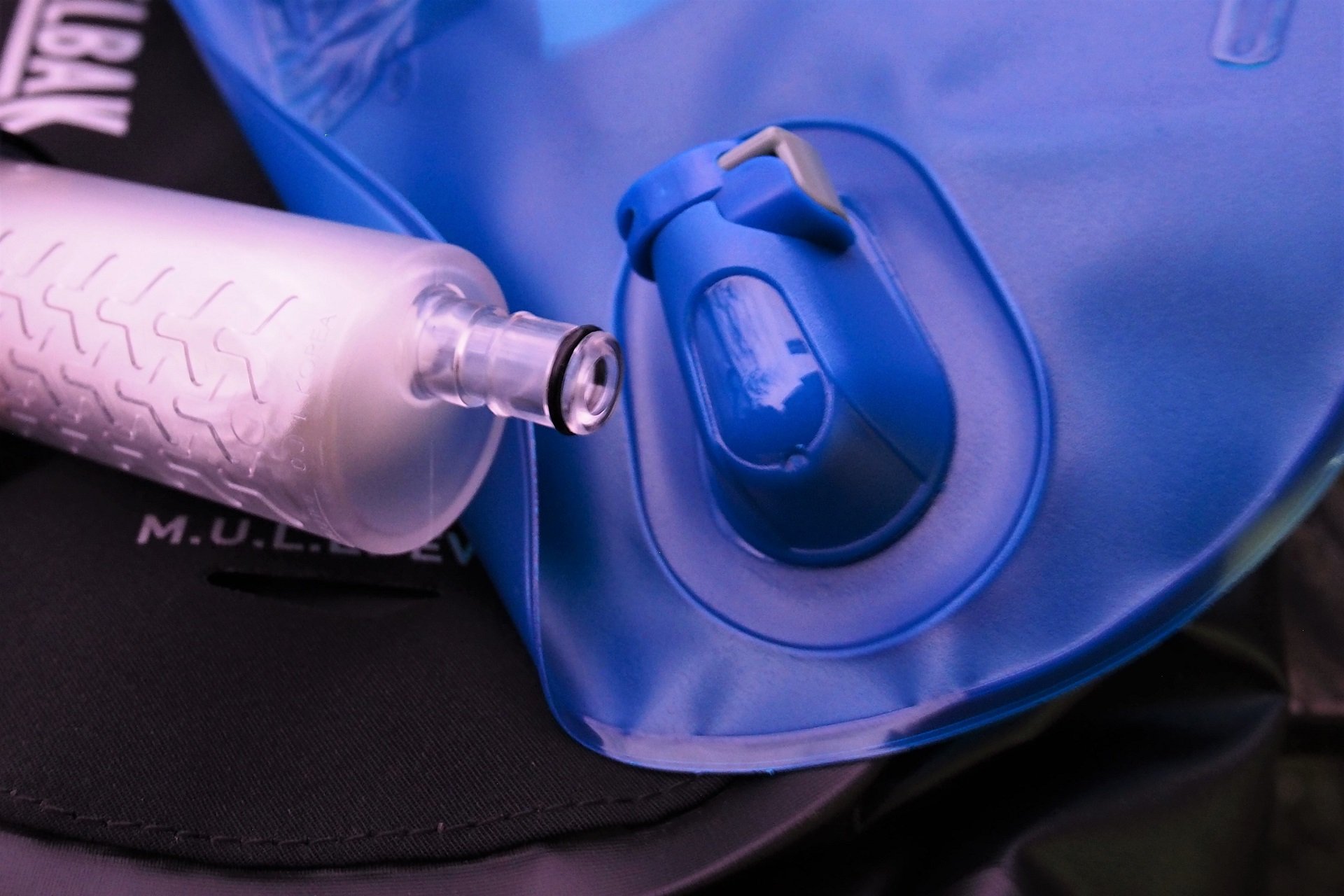
The CamelBak LifeStraw is a separate add-on that will work with any of their bladders with a quick release hose setup. If your CamelBak bladder doesn't have a QR hose then it may be past its expiry date.
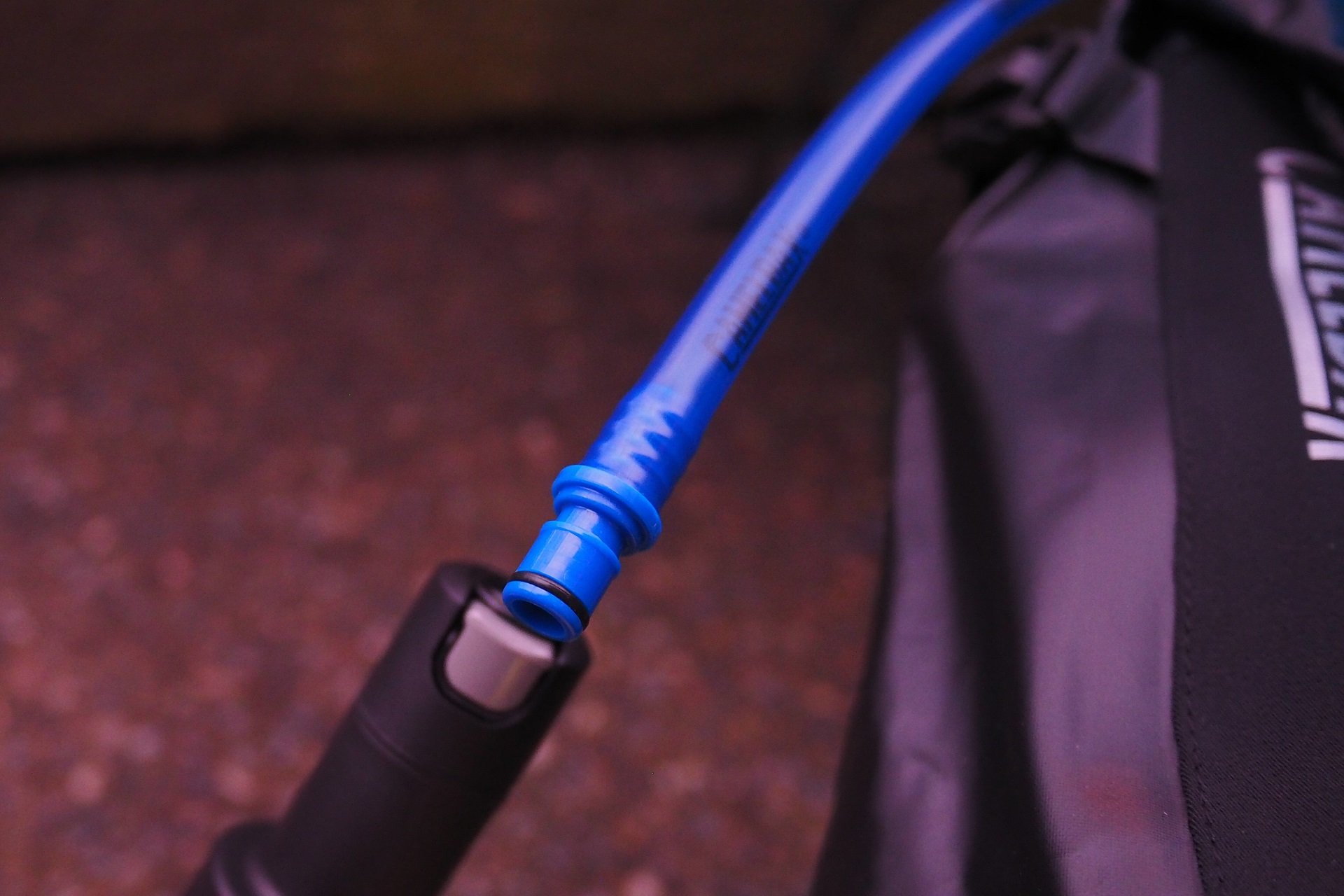
I did have to shorten my hose a fair bit - at the bite valve end - to accommodate the additional length of the filter. But, as my friend Khai pointed out, this is a "dirty bag" now anyway, I'm not using this bladder again without the filter.
Inline LifeStraw
Am I saying that adding an inline water filter to a hydration bladder hose is comparable to Horst Link suspension, narrow-wide rings, and clutch derailleurs? I am not. That would be like comparing WaveCel helmet tech to the introduction of carbon fibre for use in bicycle frames. But it dawns on me that there may not be innovations on the level of four bar suspension (1922), hydraulic disc brakes (1918), modern drag reels (1902), or roller chains (16th Century) left for us to adapt. There's the idea that humans come in all shapes, sizes, quirks, old injuries, and preferences, which companies like SQLab have figured out with their bars and saddles, but sadly helmet companies, for example, haven't woken up to yet.
An inline LifeStraw, in a bottle or bladder, isn't an epic advancement for mountain biker-kind. Rather, it is a beautiful adaptation of existing technology that made me think of all the other innovative adaptations of the past. And, I think that it will be experience-changing for some riders. Just fill the bladder, wherever, and go. We're privileged to have wonderful tap water here in North Vancouver, but for regular rides most folks I know are using a bottle or two now anyways. Hydration bladders only remain relevant for most of my riding companions on epic rides or multi-day trips.
With my 3L bladder and the LifeStraw, I can fill up wherever there's a water source. There's no extra filtration steps; just fill and go. It's not all lemonade, however. It takes a bit of extra suction to pull water through and, as my friend Khai pointed out, once you put "dirty" water into the bladder you are committing to always using it with the filter - but for me that's fine. The only time I use a bladder these days is for epic rides where the ability to fill up worry-free in creeks, streams, or rivers is a big plus.

I think the Chase Vest or Chase Protector Vest are both excellent options for mountain bikers looking to add additional water carrying capacity to their normal bottle setup for those epic rides.
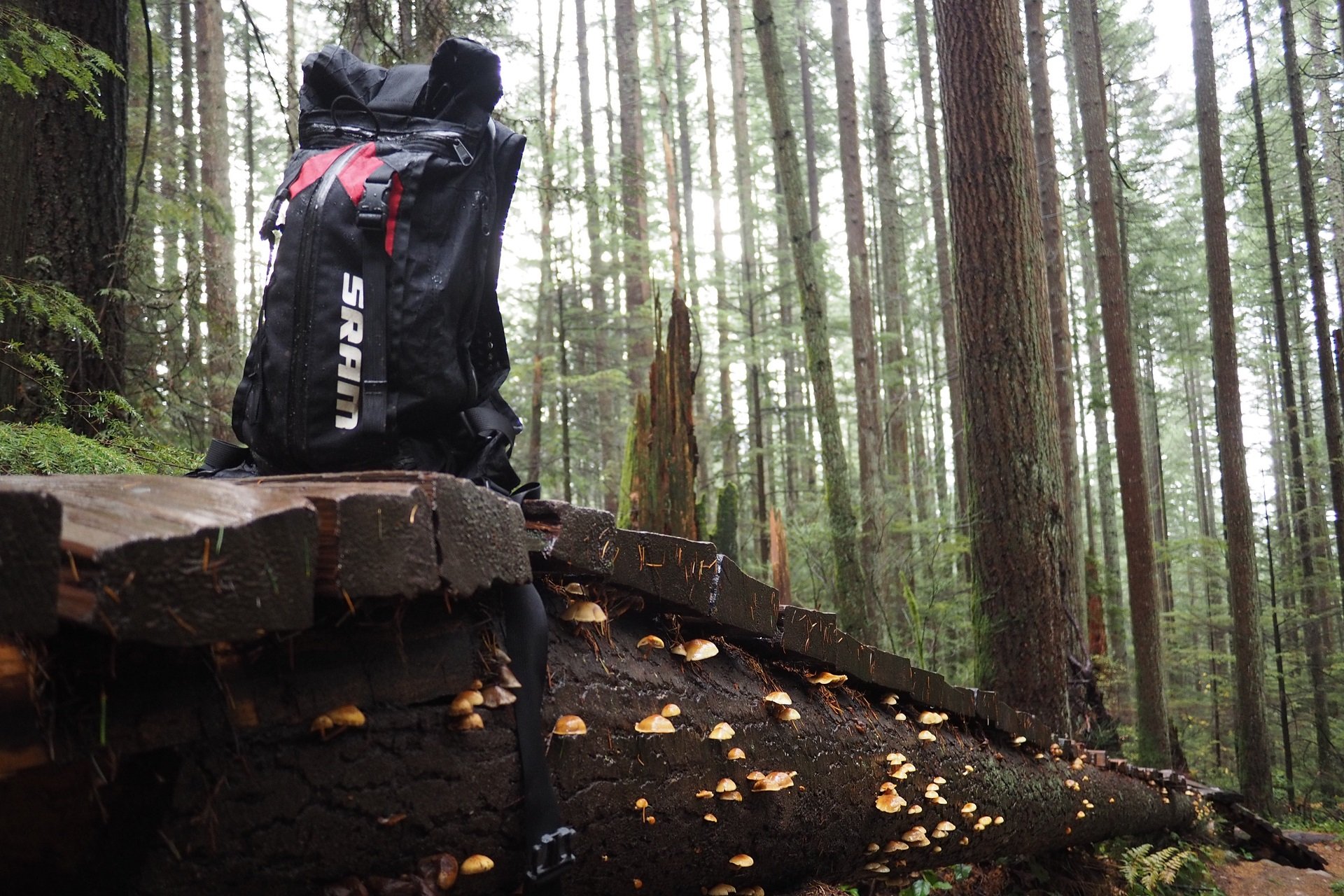
CamelBak's regular-shaped bladders will fit in any pack. So running the 3L Bladder and LifeStraw setup in my Hauser, in place of my back protector is a non-issue. You are probably due for a new bladder anyway!
I won't be riding with a bladder regularly - I like my bottles - but there are times of the year when trail conditions are gross, long rides where I know there are ample 'fresh' water sources, and general adventures where the inline LifeStraw has the potential to change my experience, or at least my planning. I like how it works, and I plan to put it to good use. And it's made me think about a lot of other cycling innovations, that are really adaptations, that I value.
The next big thing in mountain biking, even if it's not as dramatic as past innovations, will probably come from outside our activity. Credit to the folks casting a wide net for actual improvement rather than overselling wider handlebar mid-sections. I'm not buying your unnecessary new brake mount standard, non-BSA bottom bracket, or Trunnion mount, but that doesn't mean that I'm not totally gung-ho for actually innovative ideas - design, technology, manufacturing, or materials. Adapt away!
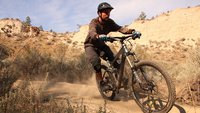
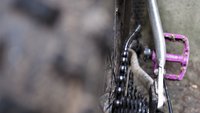

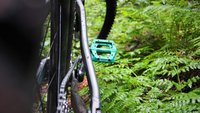

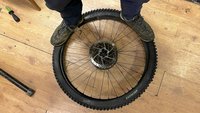
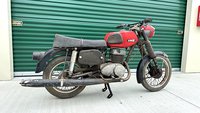

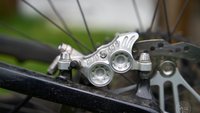


Comments
Luix
2 years, 3 months ago
Beautifully presented piece Mr. Major. I can certainly see the potential in long, multi-day, far from civilization rides.
Although I have to admit you had me when you voiced towards the early and painful decease of Flat Mount calipers.
Reply
Andrew Major
2 years, 3 months ago
Thank you!
Clearly, I am very much not a fan of flat-mount, even beyond it being change-for-change sake.
Didn’t want to oversell or undersell how nifty the filter is, but I think it’s cool!
Reply
cheapondirt
2 years, 3 months ago
The inline filter is nice. Have you seen the MSR Trailshot? It's a hand pump that can fill a hydration pack through the hose. Super nice not having to pull the bladder out and get it wet in the creek. I don't think the two systems will work together because the hose would then be dirty, but if the lifestraw could be integrated at the business end of the pump, magic.
Reply
Andrew Major
2 years, 3 months ago
I have a couple friends who ride with one bottle on their frame and an MSR in their hip pack. They love it!
I used tablets previously (easy to carry for emergency use) but the Inline Lifestraw is the first product of the type that made me go “yeah.”
Reply
Vik Banerjee
2 years, 3 months ago
I use Pristine tabs when I feel the need to treat water. I have considered the inline filters...I'd get a bottle with a straw, but so far I haven't needed one enough to be bothered on bike rides.
BTW - I don't understand the comment in the article about not being able to use the bladder for clean drinking water after filling it from a stream/creek. Just wash and dry it. It's not contaminated in any permanent sense.
Reply
Andrew Major
2 years, 3 months ago
Yeah, that’s my brand too, and I’ll continue to have some in my kit for regular rides - because you never know.
I like this better for long adventures, but tabs have never done me wrong.
———
You think? Maybe I’m just paranoid but I was thinking I wouldn’t be able to clean it out without using products I also don’t want to ingest.
Reply
Vik Banerjee
2 years, 3 months ago
Clean with soap and water. Rise thoroughly. Dry. I don't own "backcountry" specific water containers. I use whatever I need and then clean them and return them to "front country" tap water use.
You are starting with an incredibly low risk situation and doing an effective job cleaning and rising the bladder so the result is pretty darn safe. If you feel concerned you could throw a Pristine tab into 1L of water in bladder and let sit for a while to treat it, but I wouldn't bother myself.
Reply
Andrew Major
2 years, 3 months ago
Okay, that makes sense. Being selectively over-cautious is one of my quirks, but I can rationalize this one.
Don’t think I’d bleach a bladder though? I know they’re not supposed to absorb tastes, but…
khai
2 years, 3 months ago
Vik may very well be right here, but having had gastro and food poisoning I don't really care to experiment with giardia or some of these other nasties... I'll take the hit with separate "clean" and "dirty" containers - especially when talking about soft plastics with attachments that have elbow bends, funky check valves, etc.
In terms of other options I've come across: MSR Trailshot, Katadyn BeFree, Sawyer Squeeze, MSR Thrulink, Lifestraw, Steripen... I actually had an MSR Trailshot in hand ready to buy and the guy in the store talked me out of it, recommending I get a Katadyn BeFree (that he did not have in stock). I didn't quite get round to the follow-up purchase but with A's desire to do some longer hikes this summer I'll probably look to pick up a small/light water filter.
Reply
ohio
2 years, 3 months ago
+1 on the sawyer squeeze. weighs nothing. takes up no room. I keep it stashed in my pack on long or hot days.
taprider
2 years, 3 months ago
yes, and if bleach can rid of black mutated gatoraid spooge from the bladder and hose
just 50 ml of bleach and warm water, let it run up to the mouth piece and leave overnight, and it will be clean by morning (does require lots of rinsing with freshwater after though)
Reply
4Runner1
2 years, 3 months ago
That’s cool! I just ordered a Pork Chop frame bag for my Ripmo as I’m already looking forward to long summer rides (without a big pack). Think I’ll buy a Trailshot and throw it in there. Thanks for the tip!
Reply
Andy Eunson
2 years, 3 months ago
I use the MSR Trailshot and one bottle on long rides where there is access to water. Which is pretty easy here in Whistler even when it’s dry. I’ve gone back to a pack though. It’s Andrew’s fault because he said the Chase Protector was really good. He said. I can toss the filter in that pack though and not fill the bladder full all the time. There’s no need to carry 2 kg of water all the time.
Reply
Andrew Major
2 years, 3 months ago
Hahaha. Glad you like it!
———
That Trailshot does seem to be very popular.
Reply
Ryan Walters
2 years, 3 months ago
I've used this thing for epic rides where I don't want to carry epic amounts of water. They collapse down to pocket size, and you can either drink straight from the filter spout, or use it to refill your regular water bottle.
https://www.katadyn.com/us/us/14946-8019639-katadyn-beefree-water-filtration-system_usa
Reply
mrbrett
2 years, 3 months ago
Me too, has worked great and seems durable too.
Reply
delta5
2 years, 3 months ago
Flat mount is ALMOST right, which is what bothers me the most about it. Why didn't the industry just go straight to radial mounting? Hope did it with the HB.160! And everyone got all grumpy so they did away with it. Adding a flat plate or tube spacer to change rotor sizes is apparently too simple, and we need to have 17deg adapter plates or whatever for what could have been a perfectly fine standard for bikes.
Reply
Andrew Major
2 years, 3 months ago
I don’t think threading the brake caliper should ever have been an answer, but I almost understand it for that clean-clean look on road bikes.
For MTB, PM basically cannibalized IS mount so with increasingly rare exceptions there aren’t than many relevant mounts anymore. Especially when 8” rotors get standardized at 200mm instead of 203mm (this year?).
It comes down to not fixing what ain’t broken. Introducing another mounting standard didn’t kill off the old ones. Now there’s just more options to support (for adapters AND brake calipers).
Reply
delta5
2 years, 3 months ago
I agree to some extent with not fixing what ain't broke, and I personally never had issues getting IS calipers straight and noise-free, but do like to see actual improvements. When I can't find an adapter for my weird edge cases, I have to go make one. When there are odd angles and offsets involved, it becomes a nightmare. If PM had just been radial from the get go, regardless of which part is threaded, adapters could have been so much easier for us, as consumers. Which means that I don't see any improvement in the function of FM, only the form.
Are 203mm actually going away?! I hadn't seen this, and it would mean fewer questions when helping people moving forward.
And your last sentence reminds me of this:
Reply
Andrew Major
2 years, 3 months ago
Ha, I’ve been sent that comic so many times!
Yes, with full credit to the mainstreaming of 220mm rotors I’d bet that 203mm will soon join 183mm, 185mm, 190mm, and 210mm in history.
Who will be the last holdout? Shimano? Formula? Magura? Couldn’t say, but would still bet on it happening sooner > later.
Reply
cxfahrer
2 years, 3 months ago
I may have missed something, but why is drinking water from streams etc dangerous? I know that one should not do it where cattle is around. But else? Or is that something that only relates to Canada?
edit: googled Giardia. No, there are not that many beavers around where I go mtbiking. But there are more beavers and nutria every year.
Reply
kcy4130
2 years, 3 months ago
Giardia. It's not something you want to get.
Edit: Opps just saw you edited. Lots of other mammals can get and spread Giardia, not just beavers. Beaver fever is just a funny name for it.
Reply
Andrew Major
2 years, 3 months ago
I have a buddy who’s been filling his bottle from fresh-water streams (no filter or tablets) for many years with zero issue. Have also known some folks who had the full beaver-fever experience. The latter is not worth the risk for me.
Reply
Morgan Heater
2 years, 3 months ago
Your buddy almost certainly has giardia, just without symptoms.
Reply
mrbrett
2 years, 3 months ago
My dog got giardia once from drinking from a stream where cattle were grazing and beavers had obviously chomped at least a couple dozen trees. We had to get two new rugs as a result. Not interested in that again, I will pay for the filter.
Reply
Andrew Major
2 years, 3 months ago
Interesting. So it’s prevalent enough to be a ‘when, not if’ situation? I’ve long used tablets - or boil/filter when camping but I’ve lots of people who just filled their bottle in running water. I mean, I always felt I was being over-cautious.
Reply
mrbrett
2 years, 3 months ago
I monitor water quality for a living and wouldn't consider drinking untreated or unfiltered water unless it's a survival situation. If you're drinking straight from a pristine waterfall, you're still rolling the dice - just with better odds. To me your over-caution is just right.
Reply
Andrew Major
2 years, 3 months ago
Cheers! Yeah, never thought throwing a tablet in was the end of the world.
Tremeer023
2 years, 3 months ago
In the UK in 2021 the river running through the Glastonbury Festival site was found to have levels of MDMA and cocaine high enough to be harmful to some species of eel.
Admittedly a unique example though.
Reply
nothingfuture
2 years, 3 months ago
See also: campylobacter and cryptosporidium.
Reply
Andrew Major
2 years, 3 months ago
Those both sound like really cute critters (Ahhhhhh!)
Reply
mrbrett
2 years, 3 months ago
I think they're Pokemon?
Reply
mrbrett
2 years, 3 months ago
This comment has been removed.
sharp Y
2 years, 3 months ago
Been drinking extensively from creeks all over the main riding zones in Squamish pretty much non stop since 2013. Year round. I've had 0 problems, ever. Just honest feedback from one individual, in one relatively contained area. In the summer I would estimate I drink 10+liters a week. Straight bottle dip. (And hopefully i remembered to stash a beer in there earlier) other riders usually seem quite stupefied by it but I seem ok for now
*twitch*
Reply
Martin
2 years, 3 months ago
Thanks for another excellent article Andrew! I'm right there with you on the flat mounts, Trunnion, and non-BSA bb shells and I'm always happy when someone with industry credibility mentions his/her aversion to those things.
I was not aware of this filter by Camelbak and it's awesome, but I think it would be even better if it could be fitted anywhere on the hose with a "universal" tube fitting. I prefer my Dakine lumbar bladder (in my Camelbak hip pack) but it seems like the tube fitting is only compatible with Camelbak bladders. Maybe other companies will follow!
Reply
Andrew Major
2 years, 3 months ago
Cheers!
———
There’s certainly the potential for a snip-and-insert version that could more universally inline any hydration hose.
In Camelbak’s case I understand why the QR in/out makes the most sense. Their system is great and very simple to use. Plus all their bladders have it.
Reply
sverdrup
2 years, 3 months ago
I’ve had good experiences with this so far, and comes with multiple fittings:
https://www.msrgear.com/water-treatment/filters-and-purifiers/thru-link-inline-water-filter/13236.html
Reply
Andrew Major
2 years, 3 months ago
Cool! Hadn’t seen the MSR. It’s a lot bigger though eh? Do you run in inside your pack or external?
Reply
taprider
2 years, 3 months ago
Another borrowed technology is ski boot bindings = SPD
Saw my first Look road bike pedals in real life in the early 1980s and, probably like many other cyclo cross racers and early mountain bikers, within seconds, was thinking why not use a small metal cleat so you could run and walk off road on them.
And endless technologies from motorsports (including the plastic ratchet on SPD shoes from ski boots and moto boots from the 1980s or earlier), styrofoam helmets, disc brakes, tubeless, noodles/liners etc. Even the camelbak bladder idea was used in moto first, although skiers' wine-skins predated that.
Reply
ackshunW
2 years, 3 months ago
Great take! But this discussion is incomplete without acknowledging the great achievements of the office chair engineers that came before us.
Reply
Andrew Major
2 years, 3 months ago
You mean the good folks at Wintek? I was wondering the other day if between the house-brand posts or Trek and Giant plus various after market options what % of dropper post market is Wintek.
Lots of notable exceptions: Reverb, Transfer/TurbineR, OneUp, etc. But still…
Reply
khai
2 years, 3 months ago
I assumed he was referring to star fangled nut that was inspired by (copied from?) the caster wheel on an office chair...
Reply
Andrew Major
2 years, 3 months ago
I actually never made four that that was adopted from office chairs for bike. Makes sense, the threadless headset is relatively new. Brilliant!
Reply
khai
2 years, 3 months ago
I read this history a while back and it stuck in my brain. Partly I suppose because I started out riding quill stems and vividly remember when suspension forks first came out, but also because the star fangled nut is so weird I always wondered how they came about that solution. As it turns out, the way many "inventions" are "discovered"...
Reply
Andrew Major
2 years, 3 months ago
Very cool. But think of the lost arts! Rather than threading the inside of steerers for OneUp tools shops were threading the outside for threaded headsets!
ackshunW
2 years, 3 months ago
Hahaha good one! No I was making a cheap joke about dropper posts.
Reply
Brad Sedola
2 years, 3 months ago
I ran into a guy midway between Penticton and Princeton on the Kettle Valley Railway that was touring from somewhere in Alberta on his way to Tofino last summer. He had been dodging fires for almost 2 months and he figured he had another month or so to go. He was loaded down considerably, but all he had for a water source was a Lifestraw that he sucked water directly out of the stream with. No bladder, no bottle. He was very appreciative of a semi-cold beer we offered. I loved that guys style for sure.
Reply
Andrew Major
2 years, 3 months ago
I’m such a regular small-dose water drinker on riders, I’d spend more time at streams than pedaling.
That’s a cool solo adventure story! When I was a kid we drove the Hope-Princeton a lot and I can remember always being wowed by the random cyclists we’d see all loaded up in the middle of nowhere. I have some friends who’ve explored BC’s various back ways by bike for weeks at a time. For whatever reasons it’s never been my thing even before I had a kid. But I do appreciate the adventure-lust (I just top out at big MTB day trips).
Reply
Reed Holden
2 years, 3 months ago
Great article. Just the right amount of quixotic grumpiness.
Don't forget the advent of the gravel bike by copying 1990-2000's mountain bikes!
Reply
Cam McRae
2 years, 3 months ago
Excellent one. My slogan for gravel bikes is: Like mountain bikes, only worse.
This is mostly tongue in cheek, but when I see someone white-knuckling painfully down the Fromme fireroad, which isn't that rough, it's quite accurate.
Surprisingly no marketing department has asked to use it.
Reply
Skooks
2 years, 3 months ago
Nice Cam! I think gravel bikes are a bastard love-child of a heavy, slow road bike and a 1980's era MTB. If I lived somewhere with lots of gravel and few mountains I would likely have one though.
Reply
khai
2 years, 3 months ago
I've got friends who are into it, but to me it's the shittiest part of mountain biking...
Reply
ohio
2 years, 3 months ago
Gravel bikes make no sense coming from a MTB context. They make tons of sense coming from a road bike context. My gravel bike is faster, more comfortable, and safer than any road bike I've ever owned. They are a correction that needed to happen because road bike geometry has been wrong basically forever*, fat tires are actually faster (within reason), fender clearance is useful in the rain/winter, and veering off a road ride onto random bits of singletrack is actually shitloads of fun. It has made trails I never would have bothered with on my enduro actually interesting, and reminds me of riding my last fully rigid bike circa '92-'97. Sure I'd be faster on those singletracks on an XC bike, but it would suck to pedal to them let alone ride say a group century on it.
* mini rant: show me a road that has tighter turns than a trail. I'll wait. So why do road bikes need faster handling geometry than MTBs? They don't. They have their geometry so they *feel* fast, i.e. twitchy... but that is actually just energy and attention that are better spent on other things, not to mention makes you slower on the downhills vs balanced stable handling.
Reply
taprider
2 years, 3 months ago
I'll bite
If you ever raced a road criterium in the rain, you will realize that you need proportionally more weight over the front tire while pedaling seated into 90 degree corners at 50 kmph and leaning the bike ~45 degrees.
The handling requirements of a road bike are about lateral grip (fore aft grip does not matter) for high speed relatively wide radius turns
Twitchy is not a bad thing. Fighter planes are twitchier than other planes of similar size, F1 and WRC race cars are twitchier than regular cars, MotoGP bikes are twitchier than cruisers and choppers...
Bermed turns on a mtn bike are kind of "set and forget" relative to road race crit turns flying/riding in formation mm's away from 100 other racers all fighting for the same line, and the infinite but infinitesimally small adjustments in line required
Reply
ohio
2 years, 3 months ago
You're exactly right that good cornering comes much more from 50/50 weight distribution than from steering angles. With a slacker head angle, you get the weight back over the front tire with longer chainstays*. You'd be surprised, but a crit bike will corner as well or better with a slacker head angle and longer chainstays that get it to 50/50, than one with a steep head angle that's at 60/40.
*That's my other rant. All size L-and-above MTBs have chainstays that are too short. That's why in EWS and DHI you see pros on frames that are smaller than what you would expect for their height.
edit: to put it in perspective, supermotos are the best-handling, highest-lean angle motorcycle format, especially at city speeds of 10mph - 50mph (vs. track speeds). Good riders can literally drag handlebar while cornering... corrected lean angles of 50+deg, uncorrected of 60deg. They have head angles around 63-64deg. To corner properly, you do compress the front a lot, to approx 66-68deg, but still much slacker than road bikes.
Reply
taprider
2 years, 3 months ago
Just did back to back ride with my mtn bike and road bike, and came up with some more ideas.
When you watch a road sprint or bmx sprint, riders are standing up and the front wheels are squirreling around underneath them. Riders are able to apply more force to the lead pedal than their mass times the acceleration of gravity (some 2 to 3 times more), so a rider must pull on the handle bars so that the force goes into propelling the cranks and not just pushing their bodies up and wasting effort. So as the handlebars saw back and forth, either counter steering has to occur to go straight, or your body mass has to move side to side relative to the bike (a stationary trainer has been invented to enable squirreliness and to feel more natural). A long slack bike feels sluggish compared to road bike geometry (I should say modern road bike geometry, because if you go back 100 years, with exception of seat tube angle and rake, road bikes were similar to "modern" geometry), because the road bike is able to easily snake under the rider so it feels like there is no wasted body movements.
Now the question is whether or not a sluggish feeling bike is actually slower in a sprint, or road bike geometry is just a placebo (although much of "modern" geometry for mtn bikes can similarly be a placebo).
el_jefe
2 years, 3 months ago
"Gravel bikes make no sense coming from a MTB context. They make tons of sense coming from a road bike context. My gravel bike is faster, more comfortable, and safer than any road bike I've ever owned. "
That makes a bit more sense (though I still thinking hitting downhill gravel road washboard at 50+kph on a rigid gravel bike is something I have ZERO interest in). It's been in my mind to get rid of my road bike here in Whistler and switch to a gravel bike, which would give me slightly more options if I wasn't going to get on a mtb. But I would always rather mtb than road or gravel ride...
Reply
ohio
2 years, 3 months ago
I'm with you that I prefer to MTB, but I'm in SF so the closest MTB that's worthwhile is a 30min drive without traffic. I can pedal out my door on the gravel bike, crank up to Hawk Hill, and take little side excursions on the Mt. Tam trails that would be epically boring on a full MTB, and be back at my apartment in about the time it would have taken me just to do the out-and-back commute to a MTB spot.
Reply
el_jefe
2 years, 3 months ago
Haha! I was about to head off on my moto in Squam this past summer into Lava Flow from Mac Blo Logging Rd, and down the hill from Indian Arm Rd comes this gravel biker through very shitty washboard, bouncing all over the place. It looked absolutely and utterly horrible.
Though I take Marc's comments below - it DOES remain of some interest to me solely as a replacement for road biking that lets me do a bit more than I would otherwise (as someone living in Whistler who basically only road rides in spring when I can't mtb).
Reply
Reed Holden
2 years, 3 months ago
Gravel is definitely worth it! Not as a replacement for mtb but as a different, equally enjoyable experience. They are surprisingly efficient and it's cool to be able to hop onto anything but technical single-track without giving it a thought. Mtb can be pretty adventurous but often it is actually a fairly prescribed experience as you follow along preset trails within a confined area. Gravel is the opposite. You go any and everywhere without limits. If there are two trail systems separated by 10km of rural highway, it would be painful to connect those two trail systems on mtb but that sounds like an ideal Gravel ride!
Reply
mtbman99
2 years, 3 months ago
An even better option is water bottles with built in filters and you don't have to go back to a pack. Also a cheap hack is use an inline water filter (sawyer mini is my go to) and you can make one yourself for $30
I also agree flat mount should not exist on mountain bikes
Reply
WyOh
2 years, 3 months ago
I like the Mini as well. On longer rides I use a squeeze bladder with it to quickly refill my usual 2 bottles, then off I go.
Reply
Andrew Major
2 years, 3 months ago
I wear a pack anyways (though usually not with a bladder installed) but I’m intrigued. Don’t the filters really reduce the volume of water?
What bottles/filters have you used and do you recommend checking out?
Reply
mtbman99
2 years, 3 months ago
I haven't used one personally most of my rides are short enough one bottle is good and if it is longer I bring a pack and my filter.
A buddy uses Water-to-go and has been very happy with it. Reduced volume but easy refill.
Reply
DanL
2 years, 3 months ago
I have used the Sawyer mini filter for a lot of bike/hike trips - cheap, especially in bulk form, can be placed inline, or onto a bottle - especially useful if it's a collapsible one. It fits easily into a pack, fannypack as well which really makes it an easy thing to carry at all times.
And well done for pointing out the 'dirty bag' procedure. It's important to remember that it's going to be contaminated unless properly dealt with.
I've also got the full-on tinfoil hat survivalist S3 filter for the home in case it's needed.
( Also, on the clean water front - a plug for 'waves for water' - head over and see what they're about)
Reply
Andrew Major
2 years, 3 months ago
I clearly need to check out the Sawyer mini filters.
Will check out Waves For Water - thanks!
Reply
Lynx .
2 years, 3 months ago
Andrew, your stuff is always, at least interesting and thought provoking and a lot of the times I agree with you, except on the whole 150/157 thing, that it isn't needed or warranted or useful, I've been using it since 2014 and love it. What didn't need to happen was Treks push of 148 instead of just using a standard that already existed in 150, that incremental jump from 142 to 148 was like pissing in the ocean trying to hope you can raise the water level, a waste of time. What I can agree with you in regards to 150/157 rears is the need for the ever increasing and stupid chainlines companies keep telling people they need instead of sticking to 49-51 crank centers which would give you absolutely perfect chainlines with a 150/157 rear.
Reply
Andrew Major
2 years, 3 months ago
If I can just get my step ladder and climb onto my horse… and… there we go.
I love this. People always seem surprised when I get correspondence that I’m stoked to hear why they like something I don’t. Often it comes down to terrain, or sport surface, or size, or whatever and we can agree on why we disagree (Note: not that same as agreeing to disagree.
I try to keep an open mind. Some stuff like 35mm bars the only justification I see is cosmetic, but if that’s the honest reason for the preference (and I’ve been told that many times) then who can argue with that?
Super Boost-157. Well, most folks argument for it is that it came on their bike, or someone at the brand using it explained to them why it’s theoretically better. To the former, well, lots of bikes come with Trunnion mount shocks too and the best most folks can say about them is they haven’t had an issue yet (very short people being the exception with some suspension designs).
To the latter, yeah, I’ve heard it straight from most of the horses’ mouths. Will it be more relevant with future chainlines? Totally. Wrote that piece! Am I telling anyone their bike sucks because it has a wider rear end? Absolutely not.
But the key is it’s bicycles and it really doesn’t matter if we can’t agree on which hub standard is better. Like Tom Ritchey and his 1” steerer tubes, it’s not like it doesn’t all work.
I love the discussions. Certainly wouldn’t be the same if we all agreed on everything!
Reply
JD
2 years, 3 months ago
> lots of bikes come with Trunnion mount shocks too and the best most folks can say about them is they haven’t had an issue yet (very short people being the exception with some suspension designs)
Wait, what? I get hating trunnion for introducing another variable, but who doesn't want more volume in the same eye-to-eye package? What am I missing? *EDIT* - Is it the blind tapped holes you don't like? I'll agree that is a potential maintainability problem, but on the face of it it doesn't seem like a terrible trade-off...
Reply
khai
2 years, 3 months ago
>> Wait, what? I get hating trunnion for introducing another variable, but who doesn't want more volume in the same eye-to-eye package? What am I missing?
No-one explains this better than Vorsprung Steve: https://youtu.be/I9Lpxj9zVis
Reply
JD
2 years, 3 months ago
Interesting. He makes some valid points, and I certainly can't discount his experience, but it still strikes me as just another one of dozens of trade-offs and compromises in the design process vs something that was conclusively a bad idea.
Reply
Andrew Major
2 years, 3 months ago
I think the comparative wear rate on shock components is higher-enough that we’ll eventually see Trunnion die off. I know enough riders who won’t own another Trunnion bike that I feel confident saying it.
Then, I also think high performance shocks should have spherical eyelets at both ends. You’re paying to much to have your frame compromising, or cannibalizing your suspension.
okiecalvin
2 years, 3 months ago
I agree on the single pivot/Horst link topic, my ‘04 Heckler with the 5th Element coil shock pedaled very well and climbed like a goat. Sure I can tell a difference when riding a Yeti or a DW bike but not enough of a difference to warrant an extra $3G
Reply
Greg Bly
2 years, 3 months ago
Got hit with Giardia from a stream pushing up to Blanchard Needle look out .
Have a Life Straw now . From London drugs. It's made localy ! Which is awesome.
Yeah I knew about much teck being applied early to pedal bikes . Early nineties I wanted long and slack . So we got large frames . Disk brakes I knew where the shite! But it took a long time to catch on . If you had Magura loise DH brakes you didn't complain about power. I'm thinking same ratio as modern Shimano.
I would not describe Andrew as a Luddite. He looks at every aspect with an open mind. Andrew trail rides no racing to Strava . I can relate .
I'm a Luddite. On gnarly trails that going fast just is not going to happen. Race down upper Crippler ? How about lower Boogie man ? Treasure trail? These trails my old school bike works best . But the modern Durolux fork and new Fox float help considerably . I run a Straight line bash gaurde . Narrow wide probably is not crucial if you have a clutch derailuer. Shimano disk brakes . I don't think 4 pot callipers have more power. Just more issues with uneven piston travel.
I think it's imperative that we keep parts compatible. All these new changes for the sake of $ .
Please keep the discussion going on alternative ideas . Nothing I can do about pushing modern stuff. Sure does look like change for the sake of change these days.
Reply
Please log in to leave a comment.